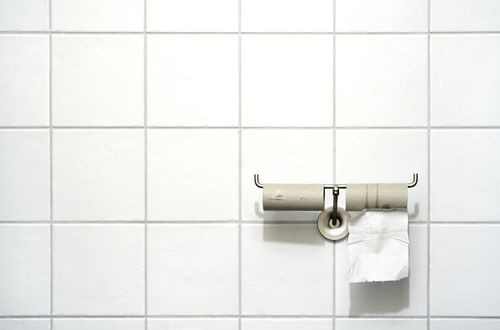'The Doctors' Reveal How To Avoid Bathroom Germs; Plus 5 Things Dirtier Than Toilet Seats

Public restrooms can give people anxiety, considering all of the door handles, faucets, toilet seat lids, and paper dispensers a person has to deal with just to relieve themselves. The CBS network television show The Doctors sent its investigators into real public and work restrooms to uncover the dangers and provide tricks to avoid germs.
5 Things Dirtier Than A Toilet Seat:
1. Toilet Paper Dispensers:
Using a public restroom can turn into a hoop jumping game filled with stressful germ bad guys ready to cling onto your hands, legs, and arms at any chance they get. When the investigators analyzed the surface areas of and around the bathroom, they found high levels of acinetobacter and enterobacter on the toilet paper dispenser, which can cause urinary tract infections, pneumonia, and womb infections.
It’s advised to grab a piece of paper towel on the way into the stall and use it as a protector to help users avoid picking anything up. Turning on and off the faucet and opening the door with a paper towel, or even using your elbow, can avoid contact with sickening germs.
2. Cell Phones
Toilets aren’t what you should be worried about when it comes to hygiene, though. In 2012, scientists found cell phones were covered with 10 times more disease-causing bacteria than most toilet seats. Call it coincidence, but around the same time the study was released it was reported a man in Uganda contracted Ebola after stealing a phone in a hospital located near an Ebola outbreak.
Germs easily crawl onto phones because they’re frequently close in proximity to our hands and mouths. You may want to think twice before letting another person borrow your phone because their bacteria also accumulates onto the device, according to a study from the University of Arizona.
3. Kitchen Cutting Board
The kitchen is almost as laced with germs and dangerous as texting your friend. In fact, the researchers found there are about 200 times more fecal bacteria on the average cutting board than on a toilet seat.
4. Kitchen Dishcloth
A kitchen dishcloth is 20,000 times worse than a toilet seat because of all the bacteria that cling to it. Germs travel better in wet areas, especially on damp and dormant surfaces, which is what makes the cloth hanging from your oven or lying on your counter a harbinger of germs to come.
5. Kitchen Sponge
The kitchen sponge takes the win by being 200,000 times dirtier than a toilet seat. Not only does it absorb water, but it also sucks up a lot of harmful bacteria. The sponge is constantly being left in the sink by the drain, in an empty pot, or in your hand. If you're not using antibacterial soap to wash away the danger, there's a good chance the next thing you touch will become infected with germs too, making you a carrier.
Surprisingly, The Doctors’ study found the toilet seat is the cleanest part of most public toilets. The toilet paper dispenser, however, has 150 percent more bacteria than the toilet seat and should make any restroom user wary when wiping. It’s probably because we’re wiping them down before and after we use them or lining it with toilet paper to protect our thighs from harboring germs in our pants.
When you’re walking back to your desk at work, hopefully your cubicle is right near the bathroom because investigators found it has the least amount of germs. Maybe it’s cleaned more frequently because of its location or just because less people want to sit there because it’s used less — whatever the reason, just remember the closer the cleaner.
Published by Medicaldaily.com



























